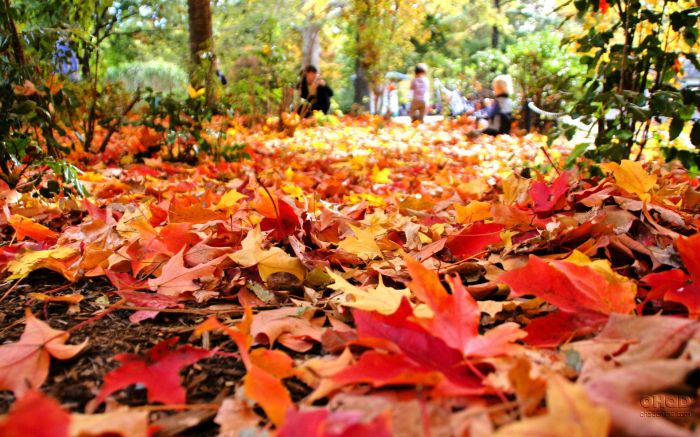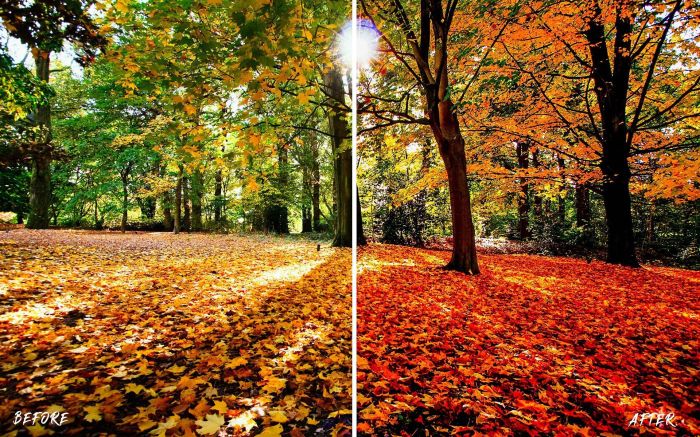When Should You Plant Dogwood Trees
Ideal Planting Time Based on Climate

When should you plant dogwood trees – The success of planting a dogwood tree hinges significantly on understanding its climatic needs and selecting the appropriate planting window. Timing is crucial; planting too early exposes the sapling to frost damage, while planting too late can hinder root establishment before winter’s arrival. The ideal planting time varies depending on the specific USDA Plant Hardiness Zone and the dogwood species.Planting dogwood trees requires a delicate balance, a dance between the earth’s rhythm and the tree’s inherent resilience.
The choice of planting time, far from being arbitrary, determines the very survival and flourishing of the young sapling. Ignoring the nuances of climate can lead to stunted growth, disease susceptibility, and even death. Understanding these climatic factors is not merely a horticultural nicety; it’s a fundamental aspect of successful cultivation.
Optimal Planting Months for Dogwood Trees Across USDA Plant Hardiness Zones
The following table provides a guideline for optimal planting months, considering factors such as soil temperature and the risk of frost. Remember that these are general recommendations, and local microclimates can influence the best planting time. Always check your local weather forecast for any unexpected cold snaps.
| Zone | Ideal Planting Month(s) | Considerations for Early Planting | Considerations for Late Planting |
|---|---|---|---|
| 5 | April-May | Risk of late frost damage; consider using frost protection. | Limited time for root establishment before winter; may need extra winter protection. |
| 6 | March-April | Monitor soil temperature; ensure it’s consistently above freezing. | Potential for drought stress if planted too late in the season. |
| 7 | February-March | Less risk of frost; focus on proper soil preparation. | Ensure adequate watering during establishment. |
| 8 | January-February | Soil may be too wet; ensure good drainage. | High summer temperatures can stress newly planted trees. |
| 9 | December-January | Risk of unusually cold snaps; monitor weather closely. | Potential for rapid growth, requiring more frequent watering. |
Impact of Frost and Freezing Temperatures on Newly Planted Dogwoods
Frost and freezing temperatures pose a significant threat to newly planted dogwood trees. Young saplings, lacking the established root systems of mature trees, are particularly vulnerable. Freezing temperatures can damage delicate tissues, leading to dieback, stunted growth, or even death. The extent of the damage depends on the severity and duration of the freeze, as well as the tree’s species and overall health.
For instance, a sudden, sharp freeze can cause more damage than a gradual temperature drop. In regions with unpredictable spring frosts, protective measures like burlap wraps or row covers are advisable.
Planting Time Differences Between Dogwood Species
While the general guidelines above apply to many dogwood species, subtle variations exist. Flowering dogwoods (Cornus florida) are generally more sensitive to frost than Kousa dogwoods (Cornus kousa). Flowering dogwoods often benefit from a slightly later planting in spring, giving the ground a chance to warm up completely. Kousa dogwoods, known for their greater cold hardiness, can tolerate slightly earlier planting in some zones.
This difference highlights the importance of considering the specific species when determining the optimal planting window. The resilience of a Kousa dogwood, for instance, allows for a more flexible planting schedule compared to its flowering counterpart. Understanding these species-specific needs ensures a higher chance of successful establishment and thriving growth.
Soil Conditions and Preparation

The success of your dogwood, a creature of exquisite beauty and quiet strength, hinges not only on the timing of its planting but also on the very earth it will inhabit. The soil, that unseen architect of growth, dictates the flourishing or fading of your tree. Understanding its composition, its pH, and its drainage is paramount to ensuring a long and vibrant life for your dogwood.Dogwoods thrive in well-drained, slightly acidic soil rich in organic matter.
Think of it as a carefully curated ecosystem, a miniature world where the tree’s roots can freely explore and absorb the nutrients they need. A soil that is too compacted, too alkaline, or poorly drained will lead to stressed roots, hindering nutrient uptake and leaving your dogwood vulnerable to disease and decline. The ideal pH range for most dogwood varieties lies between 5.5 and 6.5, though some species might tolerate slightly higher levels.
The whisper of the wind carried a secret: dogwood trees, planted in the quiet hush of autumn, seemed to thrive with an uncanny vigor. But the ancient knowledge, passed down through generations, spoke also of a parallel mystery – the art of coaxing life from cedar seeds, a process detailed in this surprisingly insightful guide: how to plant cedar tree seeds.
Understanding this could unlock the key to the dogwood’s full potential, for their fates, it seems, are strangely intertwined.
Achieving this balance requires careful preparation and, sometimes, thoughtful amendment.
Soil Testing Methods
Knowing the precise composition of your soil before planting is akin to having a blueprint for your dogwood’s future. It allows for informed decisions regarding soil amendments, preventing costly mistakes and ensuring optimal growth. Several methods exist to achieve this understanding.
- Home Soil Testing Kits: These readily available kits provide a quick and relatively inexpensive way to assess your soil’s pH and nutrient levels. Results are usually presented in an easy-to-understand format, allowing for straightforward interpretation and subsequent amendment decisions. Accuracy might vary compared to laboratory testing, but they offer a good starting point for many gardeners.
- Professional Laboratory Testing: For a more precise analysis, sending a soil sample to a professional laboratory is recommended. These labs employ sophisticated techniques to determine a wide range of soil properties, including pH, nutrient levels, texture, and organic matter content. The detailed reports provide a comprehensive understanding of your soil’s characteristics.
- Visual Inspection: While less precise than laboratory or kit testing, a careful visual inspection can provide preliminary insights. Observe the soil’s color, texture, and drainage characteristics. Clayey soils, for instance, tend to be poorly drained, while sandy soils often drain too quickly. This initial assessment can guide further testing and inform early amendment strategies.
Planting Hole Preparation
Once you’ve assessed your soil’s condition, preparing the planting hole is the next crucial step. This isn’t merely a matter of digging a hole and plopping in the tree; it’s about creating a welcoming environment for the roots to establish themselves.The hole should be twice as wide as the root ball of your dogwood sapling and just as deep.
This wider diameter allows for easier root spread and better soil contact, crucial for water and nutrient absorption. If your soil test reveals deficiencies, amending the soil within the planting hole is essential. For instance, if the soil lacks organic matter, incorporate compost or well-rotted manure to improve drainage, aeration, and nutrient availability. If the soil pH is too high, amend with elemental sulfur to lower it gradually.
The amended soil should be thoroughly mixed with the existing soil before planting. Remember, the goal is to create a nurturing environment, a microcosm of ideal soil conditions, within the planting hole.
Potential Problems and Solutions: When Should You Plant Dogwood Trees

The seemingly delicate beauty of the dogwood tree belies a certain resilience, yet even these elegant specimens are susceptible to a range of challenges. Understanding these potential problems and implementing proactive solutions is crucial for ensuring the longevity and vibrancy of your dogwood. Ignoring these issues can lead to a slow decline, robbing your garden of its graceful presence.
The key lies in vigilant observation and timely intervention.The most common threats to dogwoods stem from a confluence of factors: disease, pests, and improper watering practices. Each of these requires a nuanced approach, blending preventative measures with targeted treatments when necessary. This is not simply a matter of aesthetics; it’s about nurturing the health and well-being of a living organism.
Anthracnose and Other Diseases
Anthracnose, a fungal disease, is a particularly pernicious threat to dogwoods. It manifests as leaf spots, twig blight, and canker formation, often weakening the tree significantly. The disease thrives in humid conditions, making it particularly prevalent in regions with extended periods of wet weather. Prevention involves ensuring good air circulation around the tree through proper spacing and pruning, avoiding overhead watering which keeps foliage wet for extended periods, and choosing disease-resistant cultivars.
Treatment, when necessary, may involve fungicide application, but preventative measures are far more effective. Other diseases, such as powdery mildew and leaf spot, can also affect dogwoods and require similar vigilance and treatment strategies.
Pest Infestations
Various insects can prey upon dogwoods, causing significant damage. Borers, for example, can tunnel into the tree’s trunk and branches, weakening the structural integrity. Scale insects can sap the tree’s vitality, leaving it vulnerable to further problems. Regular inspection is paramount. Look for signs of insect activity, such as wilting leaves, unusual growths, or bore holes.
Preventative measures include maintaining the tree’s overall health through proper watering and fertilization. Treatment options range from insecticidal soaps to targeted sprays, depending on the specific pest. Early detection and intervention are crucial to minimize damage.
Watering Techniques and Their Impact, When should you plant dogwood trees
Proper watering is not merely about supplying water; it’s about providing the right amount at the right time. Overwatering can lead to root rot, creating an environment conducive to fungal diseases. Underwatering, on the other hand, stresses the tree, making it susceptible to pests and diseases. A deep, infrequent watering strategy is ideal, encouraging deep root growth.
The soil should be allowed to dry slightly between waterings. Mulching around the base of the tree helps retain moisture and regulate soil temperature, reducing the frequency of watering needed. Observe the soil moisture levels regularly, adjusting your watering schedule accordingly. A consistently damp, but not waterlogged, soil is the goal. This approach minimizes the risk of both overwatering and underwatering, promoting a robust and healthy dogwood.
Helpful Answers
What type of fertilizer is best for dogwood trees?
A balanced, slow-release fertilizer is ideal. Avoid fertilizers high in nitrogen, which can promote excessive leaf growth at the expense of blooms.
How often should I water a newly planted dogwood?
Water deeply and regularly, especially during dry spells, for the first year. Aim for consistent moisture, but avoid waterlogged soil.
Can I plant a dogwood tree in a pot?
While possible for smaller varieties, most dogwoods prefer in-ground planting to allow for proper root development and growth.
My dogwood leaves are yellowing. What’s wrong?
Yellowing leaves can indicate several issues, including poor drainage, nutrient deficiencies, or disease. Check your soil and consider a soil test.
